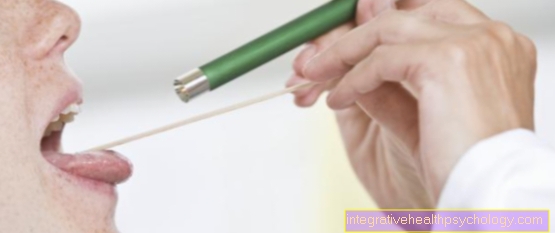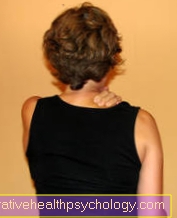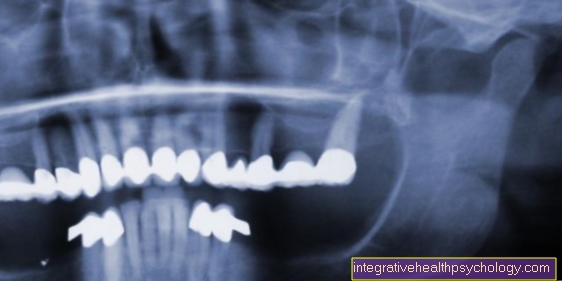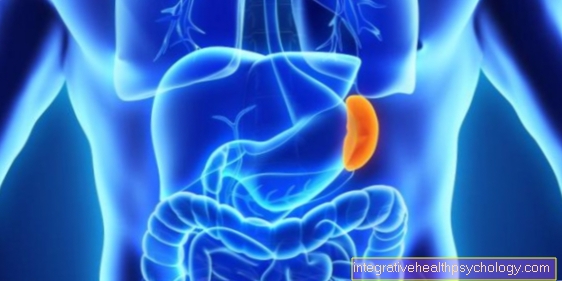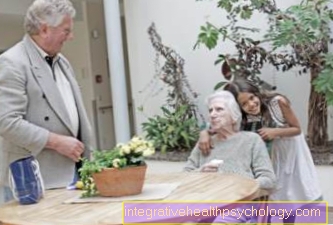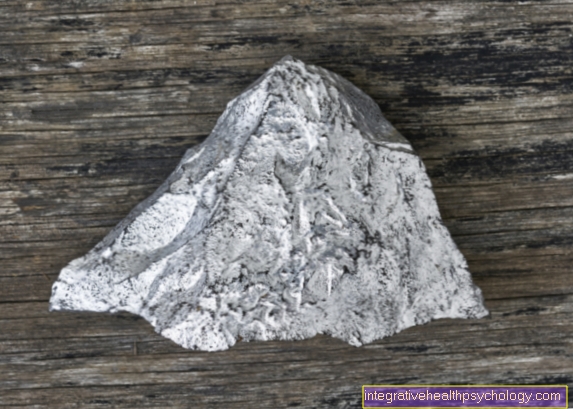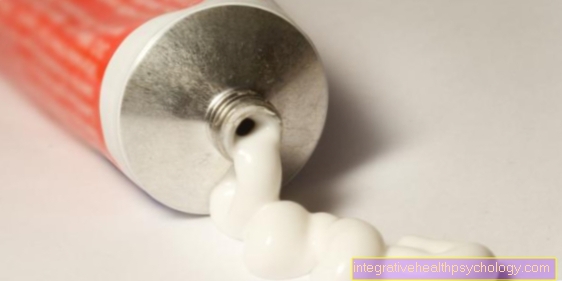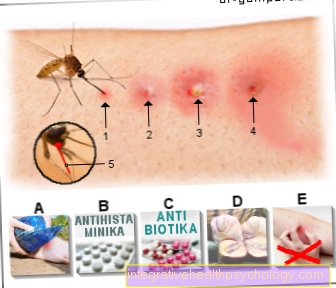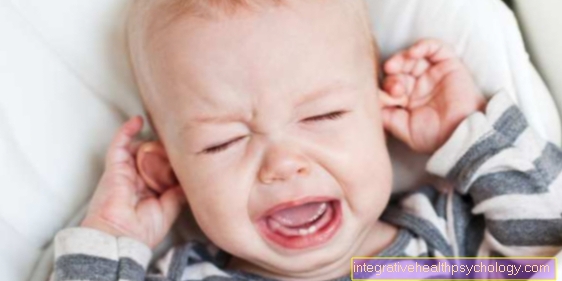Achilles tendonitis caused by antibiotics
introduction
Due to their broad spectrum of action, antibiotics can repeatedly trigger undesirable side effects. A classic example of this is Achilles tendinitis, and rarely even Achilles tendon ruptures, which are triggered by the use of certain antibiotics. The side effects are rare, but antibiotics are taken very often, which is why cases of Achilles tendonitis due to antibiotics are recorded again and again.
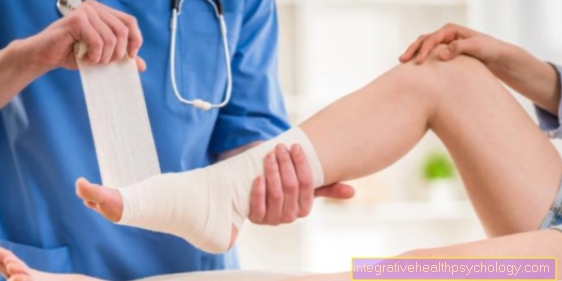
These antibiotics can cause inflammation of the Achilles tendon
There is a specific group of antibiotics that are known to cause inflammation of the Achilles tendon. These are the so-called fluoroquinolones. The best-known representatives of this group of antibiotics are ciprofloxacin and levofloxacin. But norfloxacin, ofloxacin and gemifloxacin also belong to the antibiotic class. There are various studies on the subject of Achilles tendonitis and rupture with antibiotics.
It's always about the fluoroquinolones. Most often, the side effects of levofloxacin are observed, as most cases of Achilles tendonitis have been recorded with this drug. Some research suggests that older people or people who also take cortisone are mainly affected by the side effect.
Read more on the subject below: Side effects of cortisone
Other studies cannot detect any differences in frequency between the age groups and therefore conclude that fluoroquinolones have an even distribution of Achilles tendonitis regardless of age. After taking these antibiotics, Achilles tendonitis can develop on one or both sides. Fluoroquinolones also rarely cause spontaneous ruptures of the Achilles tendon.
Appointment with an expert in Achilles tendonitis?

I would be happy to advise you!
Who am I?
My name is dr. Nicolas Gumpert. I am a specialist in orthopedics and the founder of .
Various television programs and print media report regularly about my work. On HR television you can see me every 6 weeks live on "Hallo Hessen".
But now enough is indicated ;-)
Athletes (joggers, soccer players, etc.) are particularly often affected by the Achilles tendonitis disease. In many cases, the cause of the Achilles tendonitis cannot be identified at first. Therefore, the treatment requires a lot of experience. I focus on Achilles tendonitis.
The aim of every treatment is treatment without surgery with a complete recovery of performance.
Which therapy achieves the best results in the long term can only be determined after looking at all of the information (Examination, X-ray, ultrasound, MRI, etc.) be assessed.
You can find me in:
- Lumedis - your orthopedic surgeon
Kaiserstrasse 14
60311 Frankfurt am Main
Directly to the online appointment arrangement
Unfortunately, it is currently only possible to make an appointment with private health insurers. I hope for your understanding!
Further information about myself can be found at Dr. Nicolas Gumpert
These symptoms indicate inflammation of the Achilles tendon caused by antibiotics
First of all, Achilles tendonitis must be recognized. This is usually accompanied by pain in the heel and Achilles tendon. There may be swelling in the area. Reddening and overheating of the affected lower leg is also not uncommon. The symptoms are particularly worse under stress, but rarely occur at rest.
If Achilles tendonitis is diagnosed based on its symptoms, a temporal association with the ingestion of fluoroquinolones must be established. This is usually only possible with a good medical history by the doctor. In most cases, this person must specifically ask the person concerned about taking antibiotics. But even if there is a temporal connection between antibiotic therapy and Achilles tendinitis, a causal connection cannot be proven.
However, if the person concerned has never had symptoms of the Achilles tendons before or if symptoms also occur, for example, on tendons in the arms, a connection is very likely. Symptoms should also improve after stopping antibiotics. However, they often do not respond particularly well to anti-inflammatory and pain relievers.
Pain
With Achilles tendonitis, pain is usually the first symptom of the disease. If pain in the Achilles tendon occurs a few days after starting antibiotic use, a side effect of the fluoroquinolones should be considered. Often, not only the Achilles tendons, but also other tendons, for example on the arms, are affected by the pain.
You might also be interested in this article: Tendinitis in the arm
treatment
The most important therapy for Achilles tendonitis caused by antibiotics is to immediately switch the antibiotic therapy from fluoroquinolones to a different antibiotic group. Then the trigger of the inflammation is reduced in the body so that the inflammation should not increase any further. In the acute phase, symptomatic therapy with pain relievers and anti-inflammatory drugs should also be carried out. However, typically in Achilles tendonitis caused by antibiotics, there is no good response to such drugs.
In addition, cooling and the use of home remedies such as quark compresses or apple cider vinegar compresses can help relieve the pain and inflammation. It is also important to consistently protect the Achilles tendons in order to avoid any further irritation of the tendons. Although the antibiotic is no longer in the body, the Achilles tendonitis may otherwise worsen.
Bandages or heel wedges can also be used to relieve the Achilles tendon. In addition, physiotherapy should take place in which the function of the Achilles tendon is slowly trained again. However, a cautious approach is indicated so that the Achilles tendon is not overstrained.
Read more on the subject below: Taping from an achilles tendinitis
Duration of illness
How long the Achilles tendonitis will last from antibiotics is very difficult to predict. First of all, it is important for healing to recognize the connection between antibiotic intake and inflammation. Otherwise the symptoms will intensify and the Achilles tendon will be severely affected. If the antibiotic therapy has been changed, you should expect a period of at least 4 to 6 weeks until the Achilles tendons are resilient.
Particularly when both sides are affected, this indicates a strong reaction of the body to the antibiotic, so that a longer healing time must be expected. As is often the case with "normal" Achilles tendonitis, the symptoms can also be felt over a significantly longer period of time. It is not uncommon for it to take several months to six months before the Achilles tendons have fully recovered.
Read more on the subject below: Duration of Achilles tendonitis
So high is the risk that the Achilles tendon will tear
It is generally known that certain antibiotics can cause a spontaneous rupture of the Achilles tendon. This applies in particular to the fluoroquinolone levofloxacin. Nevertheless, the rupture of the Achilles tendon is one of the very rare side effects of the drug. Despite some studies, it is not yet sure whether other factors promote the rupture of the Achilles tendon. Therefore, the risk of this cannot be precisely quantified.
In most cases, however, additional stress, such as previous damage to the tendon or heavy physical exertion in addition to taking antibiotics, is the cause of the Achilles tendon tearing. There are also assumptions about the connection between an Achilles tendon rupture and the age of the person concerned and the use of cortisone.
This article may also be of interest to you: Achilles tendon rupture


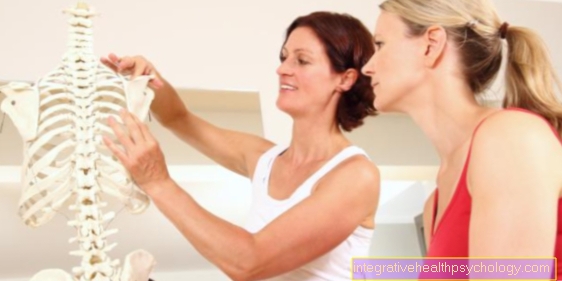


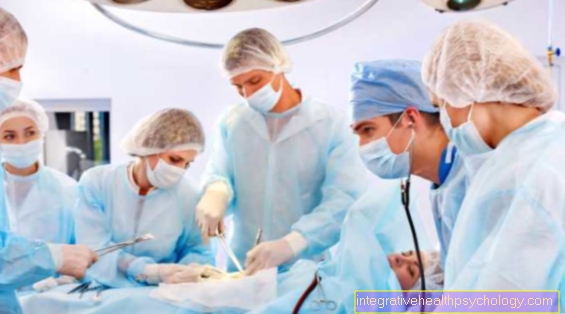
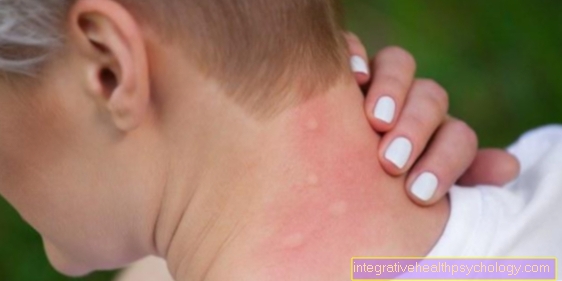
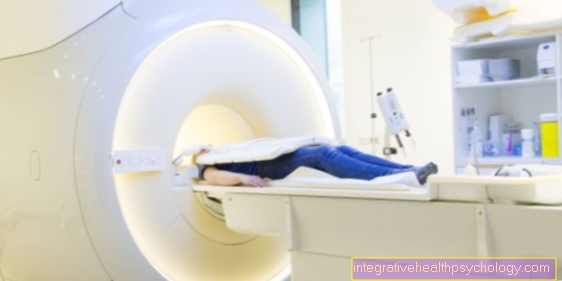
.jpg)
